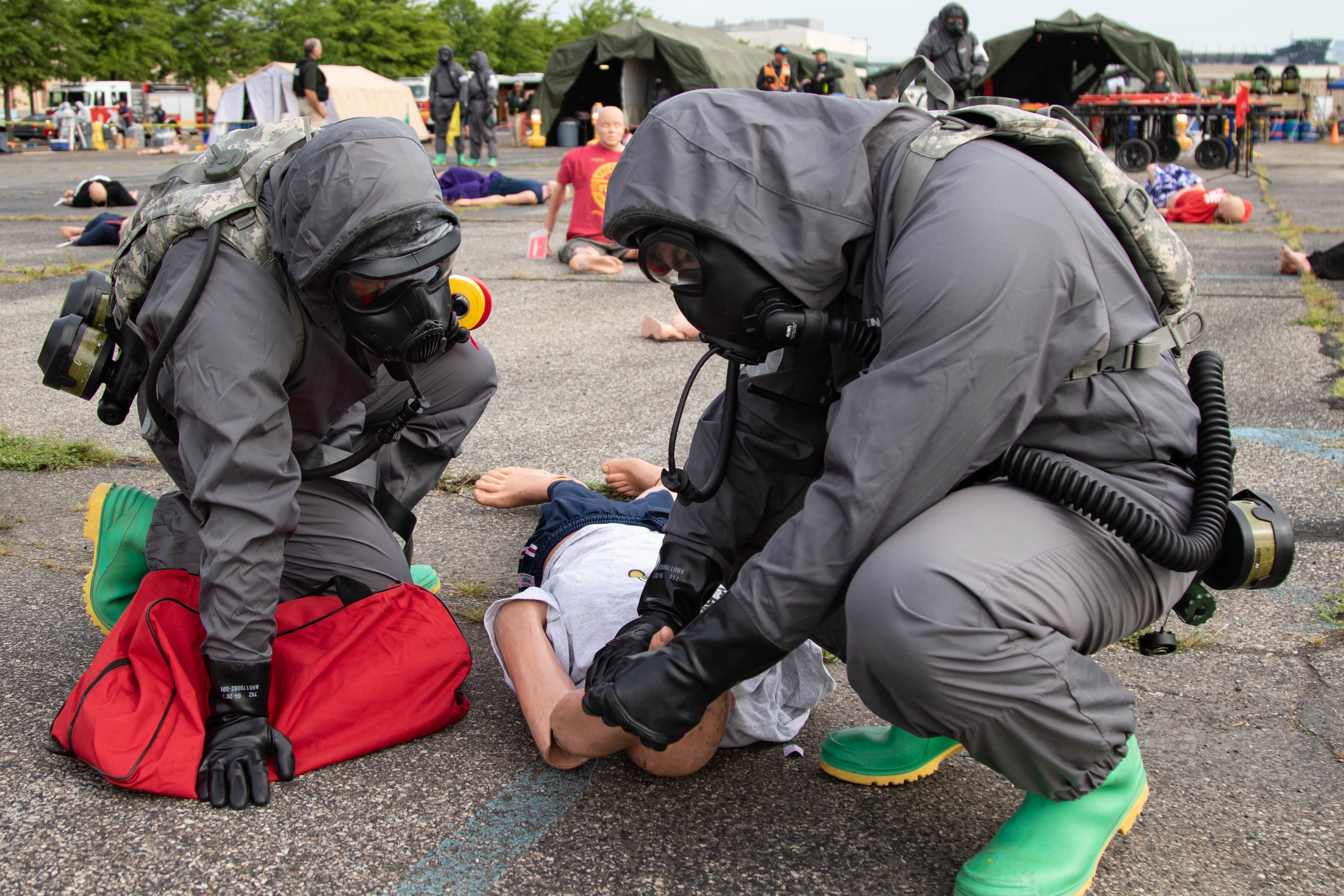In a simulated training exercise, hypersonic missiles strike New York City, Chicago and Philadelphia near simultaneously, spreading unknown contaminants across these major metropolitan areas.
A group of more than 400 military members and another 150 local, state and federal emergency workers flood into Philadelphia where the “strike” has collapsed Lincoln Financial Field structures and derailed a train at the CSX railyard, which triggered a chlorine leak that’s spreading fast.
Those troops and civilian responders bring Nuclear, Biological, Chemical and Radiological detection and decontamination gear with them.
And the lead element — Task Force 46, primarily composed of Michigan Army National Guard members — also brings five years of experience rehearsing, planning and executing training geared for exactly this type of event.
The exercise involved 150 role players with realistic fake wounds and symptoms from the simulated attack. And for the thousands of Philadelphians who saw military helicopters flying low through the city and watercraft speeding along the Delaware River on July 27, day two of the three-day exercise, the scenario might have seemed too real for comfort.
But these types of exercises, with Russia breaking chemical weapons treaties and China fueling hypersonic missile development to defeat U.S. defenses, are sorely needed for the Guard and their local, state and federal partners in the homeland, officials said.

“This is an opportunity to train firsthand with some of the best first responders in the world who do this day in and day out,” said Army National Guard Col. Chris McKinney, TF 46 chief of staff.
The Army created the task force in 2013.
The most recent series of Dense Urban Terrain-focused CBRN exercises kicked off in 2018. Some version of the event has been held each year since then, while Guard forces also responded to the COVID-19 pandemic.
Past events have included similar hazardous material simulated attacks on Detroit, Michigan, and recovery training at the Guard’s Muscatatuck Urban Training Center near Butlerville, Indiana.
Each annual exercise has grown in both the number and variety of partners in recent years.
This year’s Guard participants include aviation and medical units from Alabama, California, New York, Indiana, Louisiana, Montana, New Jersey, Pennsylvania and Tennessee.
Outside the Guard, U.S. Army North, the Army Reserve and the Coast Guard also provided personnel.
Philadelphia’s Director of Emergency Management Dominick Mireles told Army Times that this was a “different style of exercise for the city.”

“From the Philadelphia perspective, this is our first time doing something to this scale in recent history,” Mireles said.
The event allows civilian agencies to run complex equipment with military counterparts. That gives those emergency workers a chance to run their gear in near-real world action, he said.
“For me, the value is seeing these things turned on and not just on a piece of paper or slide deck,” he said.
Guard members were able to respond to the “strike zones” and simulate CBRN detection with tests of materials and role player victims. They then worked with civilian counterparts running mass decontamination sites.
Other elements of the task force conducted high-level entry work at the Philadelphia Fire Academy and worked in mock rubble to rescue trapped role players as they would in major building collapses from such a missile attack.
Some worked in subways, testing communications gear underground for simulated search and rescue. And still others set up expedient landing zones as they coordinated victim evacuations.
The city also offered new training opportunities for the Guard visitors.

McKinney noted that five military helicopters, two UH-60 Black Hawks and two HH-60 Pave Hawks with the Pennsylvania National Guard and a Coast Guard aircraft were running patient evacuation efforts.
But the waterways also provided ways to bypass snarled traffic that would plague any real-world disaster response.
McKinney stressed that out of all the missions the Guard performs, homeland defense is their top priority.
“So, soldiers at all levels of command understand exactly what to do when working with a civilian incident command,” McKinney said.
*CORRECTION: This article has been updated to correctly state the billet of Col. Chris McKinney with Task Force 46.
Todd South has written about crime, courts, government and the military for multiple publications since 2004 and was named a 2014 Pulitzer finalist for a co-written project on witness intimidation. Todd is a Marine veteran of the Iraq War.





